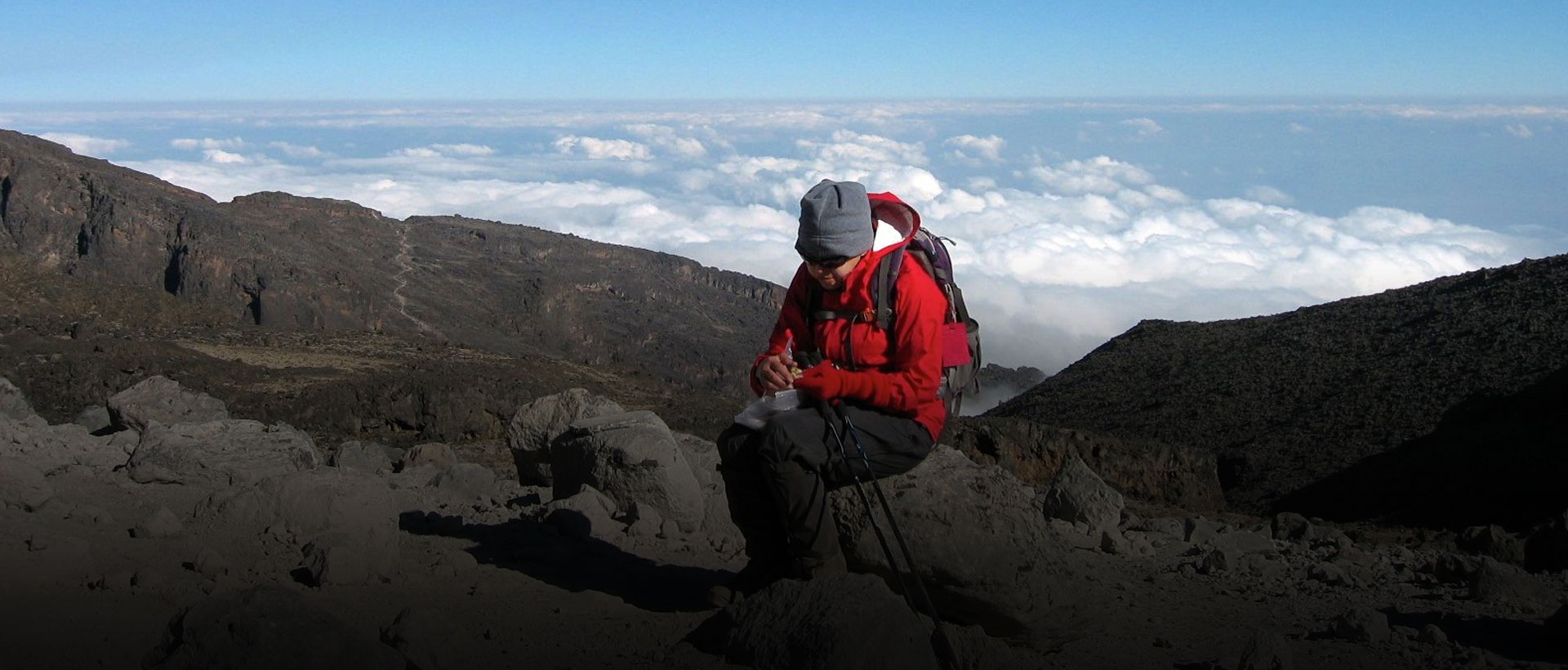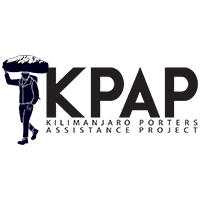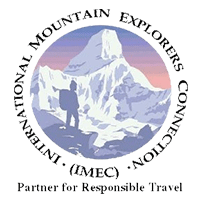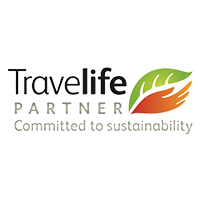
Kilimanjaro Altitude Sickness
Kilimanjaro Altitude Sickness
You cannot talk about Kilimanjaro without discussing altitude sickness. This is because the trek requires you to climb to nearly 19,000 ft above sea level! The air is very thin at that elevation, and affects everyone, even the fittest of climbers.
Kilimanjaro altitude sickness
Altitude sickness is not uncommon on Mount Kilimanjaro, also known as the Roof of Africa in Tanzania, and the highest peak in Africa, and tallest freestanding peak in the world! Towering at an incredible 19000ft above sea level, climbing this majestic mountain has its challenges. The most common of them all? Altitude sickness. Altitude sickness on Kilimanjaro and your overall safety on the mountain go hand in hand, and should be taken very seriously. In this article we cover the effects of enduring high altitudes, what to expect and how to overcome it.
What is altitude sickness?
Altitude sickness, or acute mountain sickness (AMS), is a negative health effect of high altitude. The percentage of oxygen in the atmosphere at sea level is about 21%. As you climb higher up the mountain the percentage remains the same but the number of oxygen molecules per breath is reduced. At 12,000 ft, there are roughly 40% fewer oxygen molecules per breath. The body, therefore, finds it hard to adapt and function as normal with less oxygen. Altitude sickness is caused by a failure of the body to adapt quickly enough to these lower levels of oxygen. Often climbers make the mistake of going too high (altitude) too quickly (rate of ascent).
But don't worry, it is perfectly normal to get altitude sickness on Kilimanjaro. In fact, at over 3,000 metres more than 75% of climbers will experience at least some form of mild AMS. It is therefore more than likely that you will experience some form of altitude sickness when climbing Kilimanjaro. Age, sex or physical fitness have no effect on your likelihood of getting altitude sickness. Just because you haven't had it before doesn't mean you won't develop it on another trip. It is essential you are clued up.
Can altitude sickness be avoided?
First and foremost, being well prepared for your climb will always put you one step closer to a successful and stress free climb. It is good to know that there is no way to ensure that you don't get affected by altitude sickness. There is a common misconception that if you are physically fit, you are less likely to endure altitude sickness. While physical fitness and altitude sickness correlate, they are not directly linked to one another. By this we mean that if you are physically fit, your body is more likely to withstand and manage the pressures of consecutive days of hiking, which makes any additional altitude sickness symptoms that may arise slightly more bearable.
So even though there is no routine to avoid it all together, there are a couple of things you can do to prepare. If you are able to, try to climb high mountains as often as possible to give your body an idea of what to expect. There have also been instances of people training with altitude masks. This is basically a mask that emulates the decrease in oxygen that you will experience on your climb, giving you the opportunity to experience it beforehand. Whether or not this is effective in avoiding AMS as a whole is still unclear, but if you have the option why not give it a go?
What are the symptoms of mild altitude sickness?
Most high altitude sickness symptoms are very normal when climbing Kilimanjaro. They are generally mild and appear a few hours after moving to higher altitudes. Altitude sickness symptoms have been likened to experiencing a bad hangover and are generally worse at night when respiratory drive is decreased. Mild forms of altitude sickness may include experiencing:
- headaches
- sleep disturbance
- fatigue
- shortness of breath with physical exertion
- dizziness
- loss of appetite
- nausea and vomiting
- irritability
- muscle aches
- swelling of the hands, feet, and face
- a rapid heartbeat
The occurrence of altitude sickness is dependent upon the elevation, the rate of ascent, and individual susceptibility. Everyone acclimatizes at different rates. The symptoms usually start 12 to 24 hours after arrival at altitude. They generally begin to decrease in severity around the third day.
More than 75% of climbers will experience at least some form of mild altitude sickness on Kilimanjaro.
What is the best acclimatisation process?
Given enough time, your body will adapt to the decrease in oxygen at a specific altitude. This process is known as acclimatization. It generally takes one to three days at any given altitude. This is why having the right itinerary for the right Kilimanjaro route is so essential. Most Kilimanjaro routes offer a good acclimatization profile. However, don't underestimate the effects of the high altitude. At African Scenic Safaris USA we have the following acclimatization procedures in place to make sure you reach the summit safely:
- Climb high, sleep low
This basically means climbing to a higher altitude during the day and sleeping at a lower altitude at night. This acclimatization procedure is achieved through well-planned itineraries. These include afternoon acclimatisation hikes to a higher level (climbing high) before descending to camp (sleeping low). African Scenic Safaris USA itineraries are designed around this key acclimatization procedure. We regularly recommend the Lemosho route because it, along with the Northern Circuit and Machame route, provides the best climb high, sleep low opportunity. You can see this demonstrated in the route height map below.
- Drink lots of water
You dehydrate faster when your breathing becomes heavy and quick. We, therefore, recommend a daily fluid intake of 4-5 liters. Fluid intake improves circulation and most other bodily functions. Our menu on the mountain accordingly contains lots of soup, hot drinks, and fresh fruit. Check your urine to make sure you are drinking enough. Avoid consuming alcohol on your climb.
- Climb slowly
One of the important points to note about climbing Kilimanjaro is that it is not a race. On the climb you will hear your guides use the phrase "pole, pole". This means "slowly, slowly" in Swahili. On your way to the top, expect to hike about 4-7h per day and around 10-14h on summit day. On summit day, the oxygen levels are low. Expect to be taking one step at a time - quite literally!
Pole, pole means 'slowly, slowly' in Swahili. Your trek guides say this to you all the time on Kilimanjaro to remind you to just take things slowly and steadily. Kilimanjaro isn't a race!
Staying safe on the mountain
There is a lot to consider when preparing for your Kilimanjaro climb and by paying careful consideration to the below factors, challenges such as altitude sickness on Kilimanjaro can be managed as safely and stress-free as possible:
Choose a qualified tour operator
There are many ways to prioritize your safety in Kilimanjaro. Above all, you need to be sure to choose the right Kilimanjaro tour operator. This decision can make or break a safe and enjoyable climb. At African Scenic Safaris USA we therefore prioritise your Kilimanjaro safety above everything else. We aim to treat the initial causes of any sickness rather than wait for the symptoms to appear. Prevention is key. Having the right knowledge gives you the tools to keep yourself as safe as possible. We like to think of ourselves as value-for-money operators. At African Scenic Safaris USA we focus on keeping the Kilimanjaro climb costs to a minimum without compromising on safety, quality equipment and nutrition. Take your time in carefully choosing your tour operator. Also find out when is the best time to climb Kilimanjaro.
Experienced guides
Having an experienced guide should be at the very top of your list of important considerations for climbing Kilimanjaro. Ensure that your Kilimanjaro guide is highly experienced in preventing, detecting, and treating altitude sickness. African Scenic Safaris USA Kilimanjaro guides are certified Wilderness First Responders (WFR). They have the tools to make critical medical and evacuation decisions on site.
The right equipment
On the mountain, you and your mountain crew will have access to the necessary equipment to assist in keeping you safe. This includes a medical kit, emergency oxygen, a stretcher and a pulse oximeter. A pulse oximeter measures the oxygen in your blood, revealing whether or not you are acclimatizing well. You will get routine check-ups throughout your climb.






